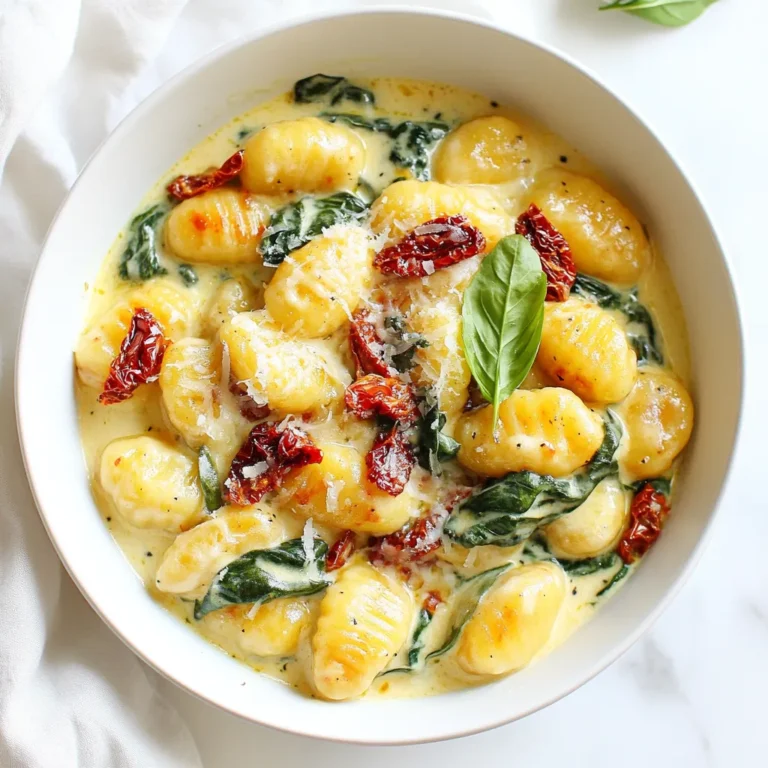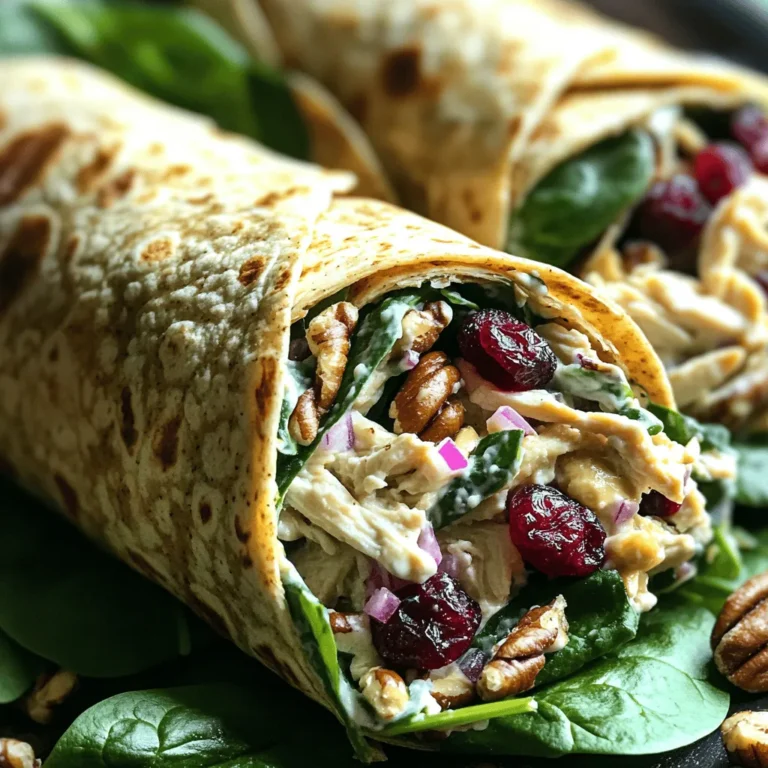Butternut Squash Risotto Simple and Creamy Recipe

Do you want a warm, creamy dish that impresses without stress? Let’s dive into making Butternut Squash Risotto! This simple recipe blends sweet, roasted squash with savory rice for a perfect comfort meal. You’ll learn how to prepare the ingredients, cook them step-by-step, and even add your own twist. Whether you’re a kitchen novice or a pro, this guide will make your risotto dreams come true!
Ingredients
List of Ingredients for Butternut Squash Risotto
For a delicious butternut squash risotto, gather these key items:
- 1 medium butternut squash, peeled and cut into small cubes
- 1 cup Arborio rice
- 4 cups vegetable broth (preferably low-sodium)
- 1 small onion, finely chopped
- 2 cloves garlic, minced
- ½ cup grated Parmesan cheese (or nutritional yeast for a vegan alternative)
- 2 tablespoons extra virgin olive oil
- 1 teaspoon fresh thyme leaves, plus extra for garnish
- Sea salt and freshly ground black pepper to taste
- Fresh parsley, chopped, for garnish
Fresh Produce Needed
The fresh produce in this dish adds sweetness and depth:
- Butternut squash is the star. Its creamy texture and sweet flavor make the risotto rich.
- Onion and garlic provide a savory base. They enhance the overall taste.
- Fresh thyme gives an earthy aroma and pairs well with the squash.
- Fresh parsley is perfect for brightening up the dish at serving time.
Pantry Staples Required
You’ll need some pantry staples to create a creamy risotto:
- Arborio rice is crucial. Its high starch content helps achieve that classic creaminess.
- Vegetable broth brings warmth and flavor. Low-sodium options let you control saltiness.
- Extra virgin olive oil adds richness and helps sauté the onion and garlic.
- Parmesan cheese (or nutritional yeast) adds a savory finish. It melts beautifully into the risotto.
- Sea salt and black pepper enhance all the flavors. Adjust to your taste as you cook.
With these ingredients, you can make a comforting and creamy butternut squash risotto.
Step-by-Step Instructions
Preparation of Ingredients
Start by gathering all your ingredients. You’ll need:
- 1 medium butternut squash, peeled and cut into small cubes
- 1 cup Arborio rice
- 4 cups vegetable broth (preferably low-sodium)
- 1 small onion, finely chopped
- 2 cloves garlic, minced
- ½ cup grated Parmesan cheese (or nutritional yeast for a vegan alternative)
- 2 tablespoons extra virgin olive oil
- 1 teaspoon fresh thyme leaves, plus extra for garnish
- Sea salt and freshly ground black pepper to taste
- Fresh parsley, chopped, for garnish
Make sure your broth is warm. This helps the rice cook evenly. Peel and chop the squash, onion, and garlic. Measure your rice and cheese. Having everything ready makes cooking easier.
Cooking Process Explained
Heat the vegetable broth in a saucepan over low heat. Keep it warm as you cook. In a large skillet or saucepan, add the olive oil and heat over medium. When it’s hot, toss in the chopped onion. Sauté for about 3-4 minutes until it softens.
Next, add the minced garlic. Cook it for one minute while stirring. You want it fragrant but not burnt. Now, add the diced butternut squash. Sauté this for 5-7 minutes until it softens a bit and starts to caramelize.
Stir in the Arborio rice. Toast it by stirring for 1-2 minutes. This step adds flavor and helps the rice absorb the broth better. Gradually add the warm vegetable broth, one ladle at a time. Stir often and wait for the liquid to soak in before adding more.
After about 15 minutes, mix in the fresh thyme and season with salt and pepper. Keep adding broth and stirring until the rice is creamy and al dente. This should take about 20 minutes in total.
Final Touches and Serving Suggestions
When your risotto is ready, take it off the heat. Stir in the grated Parmesan cheese until it melts into the dish. This adds a rich, creamy texture.
Serve your Butternut Bliss Risotto right away. Garnish with fresh parsley and a sprinkle of thyme. For a special touch, drizzle a bit of olive oil on top. You can also add a few extra sautéed squash pieces for a beautiful presentation. Enjoy your meal!
Tips & Tricks
Achieving Creamy Risotto Consistency
To get that perfect creamy risotto, use Arborio rice. It has high starch content. This starch releases during cooking, which gives risotto its rich texture. Always add warm broth slowly, one ladle at a time. Stir often. This helps the rice absorb the liquid evenly. Keep an eye on it. The key is patience. Once the rice is al dente, stir in cheese for extra creaminess.
Common Mistakes to Avoid
One common mistake is adding all the broth at once. This leads to uneven cooking. Another error is not stirring frequently. Stirring helps the rice release its starch. Avoid rushing the cooking time. If you cook it too fast, the rice can become mushy. Lastly, don’t skip the seasoning. Salt enhances the flavors. Taste as you go to find the right balance.
Recommendations for Flavor Enhancement
To boost flavor, try adding herbs like sage or rosemary. These herbs pair well with butternut squash. You can also mix in nuts like toasted pine nuts or walnuts for crunch. Another idea is to finish with a splash of lemon juice. This adds brightness to the dish. For a richer taste, use homemade broth. It makes a big difference.

Variations
Vegan Adaptation of Butternut Squash Risotto
You can easily make Butternut Squash Risotto vegan. Just swap out the Parmesan cheese for nutritional yeast. This gives a cheesy flavor without any dairy. Use vegetable broth to keep it plant-based. Follow the same cooking steps, and you’ll have a creamy dish everyone will love.
Ingredient Substitutions
If you lack some ingredients, don’t worry! You can use different types of rice, like jasmine or basmati, but Arborio rice gives the best texture. Instead of thyme, you can use sage or rosemary for a different flavor. If you don’t have butternut squash, try pumpkin or sweet potato. The dish will still be tasty and unique.
Seasonal Variations and Add-ins
You can change your risotto with seasonal veggies. In the spring, add peas or asparagus for a fresh twist. In the fall, consider adding chopped kale or spinach. For extra flavor, mix in toasted nuts like walnuts or pine nuts. These additions bring texture and crunch to your dish.Enjoy exploring these variations!
Storage Info
Proper Storage Techniques
To keep your Butternut Squash Risotto fresh, let it cool first. Transfer it to an airtight container. Make sure to store it in the fridge if you plan to eat it within a few days. It should stay good for about 3 to 5 days in the fridge.
Reheating Tips for Leftovers
When you want to enjoy your risotto again, heat it gently. Add a splash of vegetable broth or water to help it regain its creamy texture. Stir it often on low heat until warmed through. This should take about five to ten minutes.
Freezing Options and Guidelines
You can freeze Butternut Squash Risotto for about a month. Portion it into small containers before freezing. When you’re ready to eat, thaw it in the fridge overnight. Reheat it on the stove, adding some broth or water as you go. This helps keep it creamy and delicious when you serve it again.
FAQs
How to make Butternut Squash Risotto from scratch?
To make Butternut Squash Risotto, start with fresh ingredients. Use a medium butternut squash, Arborio rice, and vegetable broth. You’ll also need onions, garlic, Parmesan cheese, and olive oil.
1. Warm the broth in a pot and keep it hot.
2. Heat olive oil in a large skillet and sauté chopped onions until soft.
3. Add minced garlic and cook until fragrant.
4. Stir in diced butternut squash and sauté until slightly caramelized.
5. Add Arborio rice and toast it for a minute to enhance flavor.
6. Slowly add broth, one ladle at a time, stirring often.
7. Once the rice is creamy and cooked al dente, mix in Parmesan cheese.
What sides pair well with Butternut Squash Risotto?
Butternut Squash Risotto pairs well with several sides. Here are a few great options:
- A mixed green salad with a light vinaigrette
- Roasted Brussels sprouts drizzled with balsamic glaze
- Grilled asparagus seasoned with lemon
- Garlic bread for a hearty addition
- Sautéed spinach with garlic for a colorful plate
These sides will enhance the flavors of the risotto without overpowering it.
How long does Butternut Squash Risotto last in the fridge?
Butternut Squash Risotto lasts about 3-4 days in the fridge. Store it in an airtight container to keep it fresh. When you’re ready to eat it, reheat in a pot or microwave. Add a splash of broth or water to restore creaminess. Always check for any signs of spoilage before consuming leftovers.
Butternut squash risotto is a tasty and filling dish. We covered the key ingredients, prep steps, and cooking tips. I shared ways to make it creamy and avoid common mistakes. You can also try vegan options or seasonal add-ins to mix it up. Remember to store leftovers properly for later enjoyment. Overall, this dish is a great choice for cozy meals. Enjoy making and sharing it with others!



![- 12 oz (340g) penne pasta - 1 lb (450g) smoked sausage, sliced into rounds - 1 bell pepper, diced (choose your favorite color) - 1 medium onion, finely chopped - 3 cloves garlic, minced - 1 tablespoon Cajun seasoning - 1 teaspoon smoked paprika - 1/2 teaspoon cayenne pepper (adjust to your spice preference) - 2 cups low-sodium chicken broth - 1 cup heavy cream - Fresh parsley, chopped (for garnish) - Salt and freshly ground black pepper to taste When I make One Pot Cajun Sausage Pasta, I love how simple the ingredients are. You start with penne pasta, which cooks beautifully in the same pot. The smoked sausage gives it a rich flavor. Fresh veggies like bell pepper, onion, and garlic add color and crunch. For spices, Cajun seasoning gives that classic kick. A little smoked paprika adds depth, and cayenne pepper lets you control the heat. You can adjust it based on your taste. The chicken broth is key; it helps cook the pasta and keeps everything moist. When you add heavy cream, it makes the dish creamy and rich. Don’t forget the fresh parsley for a pop of color. A sprinkle of salt and pepper enhances all the flavors. You can find the full recipe with exact measurements and cooking steps. Enjoy making this easy and flavorful dish! 1. Heating the oil: Start by pouring two tablespoons of olive oil into a large pot. Heat it over medium heat until it shimmers. This takes about a minute. 2. Sautéing the sausage: Next, add one pound of sliced smoked sausage to the pot. Cook the sausage for about 4-5 minutes. Stir it until it turns brown and crispy. This adds great flavor. Then, remove the sausage from the pot and set it aside for later. 1. Cooking the bell pepper and onion: In the same pot, toss in one diced bell pepper and one finely chopped medium onion. Sauté these for about 3-4 minutes. You want them to soften and turn slightly translucent. 2. Adding garlic and spices: Now, add three minced garlic cloves. Cook for one more minute until it smells amazing. Then, stir in one tablespoon of Cajun seasoning, one teaspoon of smoked paprika, and half a teaspoon of cayenne pepper. Cook for another minute. This step brings out the flavors of the spices. 1. Combining ingredients in the pot: Carefully pour in two cups of low-sodium chicken broth. Use a wooden spoon to scrape any brown bits from the pot. Next, add 12 ounces of penne pasta and one can of undrained diced tomatoes. Mix everything well. 2. Simmering the mixture: Bring the mixture to a boil, then reduce the heat to low. Cover the pot and let it simmer for 12-15 minutes. Stir occasionally to keep the pasta from sticking. Cook until the pasta is tender and the liquid thickens. Now you can check the [Full Recipe] for additional details. To make sure your pasta does not stick, keep a close eye on the pot. Stir the pasta every few minutes while it cooks. This simple step prevents clumping and ensures even cooking. If you find your dish too thick, add a splash of chicken broth or water to loosen it up. For creaminess, adjust the amount of heavy cream to fit your taste. Start with one cup, then add more if you like it richer. Customizing the spice levels in your Cajun sausage pasta is easy. If you want more heat, add an extra pinch of cayenne pepper. You can also mix in some crushed red pepper flakes for a different kick. To add freshness, try throwing in herbs like thyme or oregano. These herbs bring depth to your dish and balance the spices well. Choosing the right pot is important for this dish. A large, deep pot works best since it holds all the ingredients and allows for easy stirring. I recommend using a heavy-bottomed pot to prevent burning. When sautéing, heat the oil until it shimmers, then add your sausage. This ensures a nice brown color and flavor. Always scrape the bottom of the pot to release any fond, which adds great taste to your sauce. {{image_4}} You can swap smoked sausage for different meats. Chicken or turkey sausage works well. They add less fat but keep great flavor. This dish still shines with these changes. For those with gluten issues, use gluten-free pasta. Options like brown rice pasta or chickpea pasta fit nicely. They change the texture but keep the taste. Want to change the spice? You can add more or less Cajun seasoning. If you like it mild, skip the cayenne pepper. For more heat, add a bit more. You can also add different vegetables. Spinach, zucchini, or mushrooms all mix well. They add color and nutrition, making the dish more exciting. Pair your pasta with sides for a well-rounded meal. A fresh salad adds crunch. Garlic bread brings warmth and comfort. For plating, serve in deep bowls. Garnish with fresh parsley for a pop of color. You can even sprinkle extra Cajun seasoning on top. This will enhance the flavors and make it look fancy. For the full recipe, check out One Pot Cajun Sausage Pasta. After you enjoy your One Pot Cajun Sausage Pasta, you may have leftovers. To store them, let the dish cool down first. Then, place it in an airtight container. This helps keep it fresh. You can keep it in the fridge for about 3 to 4 days. When you're ready to eat again, you can easily reheat it. Just place it in a pot over low heat, stirring often. You can also use the microwave. Heat it in short bursts, stirring in between, until it's warm. If you want to save the dish for longer, you can freeze it. First, let the pasta cool completely. Then, transfer it to a freezer-safe container. Make sure to leave some space at the top, as it may expand when frozen. You can freeze it for up to 3 months. To reheat from frozen, move it to the fridge overnight to thaw. Next, warm it in a pot or microwave until hot. You may need to add a splash of chicken broth or cream to keep it creamy. One Pot Cajun Sausage Pasta can last in the fridge for about 3 to 4 days. If you freeze it, aim to use it within 3 months for the best taste. Always check for signs of spoilage before eating. If you see any mold or if it smells off, it's best to throw it away. Remember, food safety is important for a delicious experience every time! Cajun seasoning is a blend of spices that gives dishes a bold flavor. It often includes paprika, garlic powder, onion powder, black pepper, cayenne pepper, and oregano. You can easily make it at home by mixing the following: - 1 tablespoon paprika - 1 teaspoon garlic powder - 1 teaspoon onion powder - 1 teaspoon black pepper - 1 teaspoon cayenne pepper - 1 teaspoon dried oregano - 1 teaspoon thyme Combine these in a bowl, and you have your own Cajun seasoning! This mix adds warmth and depth to your One Pot Cajun Sausage Pasta. Yes, you can easily make this dish vegetarian. Instead of sausage, you can use these options: - Plant-based sausage - Grilled mushrooms - Chopped tempeh These substitutes give a hearty texture. For protein, consider adding: - Chickpeas - Lentils - Tofu These choices keep the dish filling and nutritious while focusing on flavors. To amp up the heat in your pasta, you can adjust the spice levels. Here’s how: - Increase the cayenne pepper in the recipe. - Add crushed red pepper flakes while cooking. For more heat during cooking, try adding fresh chopped jalapeños or hot sauce. Just remember, start with a little and taste as you go! You want to enjoy the flavors without overwhelming your palate. This recipe is simple and delicious. We covered the best ingredients needed, such as penne pasta, smoked sausage, and fresh veggies. I shared tips for perfecting texture and flavor, plus ways to change things up. You can store leftovers easily and even freeze the dish for later. With this guide, cooking is quick and fun. So grab your ingredients and start creating a tasty meal today. Enjoy the process and make it your own!](https://dishtreats.com/wp-content/uploads/2025/06/1c4c8226-f553-4583-9158-57397e0bfaf8-768x768.webp)



![- 1 cup quinoa - 2 cups water or vegetable broth - 1 large cucumber, diced - 1 red bell pepper, diced - 1 cup cherry tomatoes, halved - 1/4 red onion, finely chopped - 1 cup fresh parsley, roughly chopped - 1/4 cup tahini - 2 tablespoons fresh lemon juice - 1 tablespoon extra virgin olive oil - 1 clove garlic, minced - Salt and freshly cracked pepper - 1/4 cup sunflower seeds - Chopped nuts (walnuts or almonds) The ingredients for your Lemon Tahini Quinoa Salad are fresh and colorful. Each one adds flavor and nutrition. Start with quinoa, which is the base of this dish. It is high in protein and gluten-free. For the salad, you need diced cucumber, red bell pepper, cherry tomatoes, red onion, and parsley. The cucumber gives crunch. The red bell pepper adds sweetness. Cherry tomatoes bring juiciness. The red onion gives a mild bite, while parsley adds a fresh taste. Next, let’s talk about the dressing. Tahini is a creamy paste made from sesame seeds. It gives richness to the salad. Lemon juice adds zing and brightness. Olive oil makes it smooth. Garlic adds depth of flavor. A pinch of salt and cracked pepper finishes it off. If you want more texture, try adding sunflower seeds or chopped nuts. They add crunch and healthy fats. This Lemon Tahini Quinoa Salad is easy to make and packed with good ingredients. You can find the Full Recipe to guide you through the steps. First, you need to cook the quinoa. Combine one cup of rinsed quinoa and two cups of water or vegetable broth in a medium saucepan. Bring the mixture to a rapid boil over medium-high heat. Once it boils, lower the heat and cover the pot. Let it simmer for about 15 minutes. The quinoa will soak up all the liquid and become fluffy. After cooking, remove it from heat and let it cool for a bit. While the quinoa cooks, you can prepare the dressing. In a small bowl, whisk together a quarter cup of tahini, two tablespoons of fresh lemon juice, one tablespoon of olive oil, and one clove of minced garlic. Mix until it becomes smooth and creamy. You can add salt and pepper to taste. Now it's time to make the salad. In a large mixing bowl, add one large diced cucumber, one diced red bell pepper, one cup of halved cherry tomatoes, one-fourth of a finely chopped red onion, and one cup of roughly chopped fresh parsley. Stir these ingredients together until they are well mixed. Next, add the cooled quinoa to the bowl with the veggies. Toss everything together gently so the ingredients blend well. Drizzle the tahini dressing over the salad and mix again. For a nice crunch, you can sprinkle a quarter cup of sunflower seeds or chopped nuts on top before serving. For the full recipe, refer to the earlier sections. Enjoy your fresh and flavorful Lemon Tahini Quinoa Salad! To make the best quinoa, start with rinsing it well. This removes any bitter coating. Use cold water and a fine mesh strainer. After rinsing, cook the quinoa in water or broth. Cooking this way adds a nice flavor. Once cooked, let it cool a bit. This helps it mix better with other ingredients. For a creamy dressing, whisk all ingredients together. Use a bowl that allows for easy mixing. If you find clumps, keep whisking until smooth. Adjust the lemon juice and tahini to match your taste. You may like it tangy or mild. Experiment to find your favorite balance. Presentation is key! Serve the salad in colorful bowls. This makes it more inviting and fun. Add lemon slices and fresh parsley on top for a pop of color. These garnishes not only look great but also add extra flavor. For a unique touch, use clear glasses to showcase the vibrant layers of the salad. Check the Full Recipe for more tips on serving! {{image_4}} You can easily boost the protein in your Lemon Tahini Quinoa Salad. Incorporate chickpeas for a hearty touch. These legumes add fiber and flavor. Diced grilled chicken also works well if you want meat. For those following a vegan diet, try tempeh or tofu. Both options soak up flavors and make the salad filling. Feel free to mix in various vegetables. Substitute or add bell peppers, carrots, or creamy avocado. These veggies add crunch and color. You can also use seasonal vegetables for extra freshness. Think of bright summer tomatoes or hearty winter squash. The key is to choose what you enjoy most. Spice up your salad with fun flavors. Add spices like cumin or paprika for a tasty twist. These spices bring warmth and depth to the dish. Fresh herbs like mint or cilantro can brighten things up, too. They add a burst of freshness that takes your salad to the next level. Store your Lemon Tahini Quinoa Salad in an airtight container in the fridge. This keeps it fresh and tasty. It’s best to eat it within 3-5 days. After this time, the flavors may fade, and veggies can lose their crunch. You can freeze quinoa salad if needed. Dress it before serving after you thaw it. Be aware that freezing may change the texture of some vegetables. It’s a good idea to use firmer veggies like bell peppers, as softer ones may not hold up well. I don’t recommend reheating salads. They taste best when served chilled. However, if you want to reheat, you can warm individual components like quinoa or cooked veggies. Just make sure to let them cool before mixing back into the salad. Enjoy the fresh, vibrant flavors! Yes, it's great for meal prep; just dress before serving. This salad stays fresh for days. You can cook the quinoa and chop the veggies in advance. When you are ready to eat, mix in the dressing. This way, the salad will taste fresh. Yes, quinoa is naturally gluten-free. It makes this salad a perfect choice for gluten-free diets. Always check that your other ingredients, like broth, are gluten-free too. This salad is friendly for many diets. You can add different vegetables, proteins, or dressings to suit your taste. Try adding chickpeas for protein or avocados for creaminess. You can also change the herbs or use a different dressing. The choices are endless! It can be a side dish or a main dish, served chilled or at room temperature. For a picnic, serve it cold. If you want a warm meal, let it sit for a bit. Dress it just before serving for the best flavor. Yes, other grains like farro or bulgur can be used as substitutes. Each grain brings a different taste and texture. You can experiment to find your favorite. Just cook them according to package directions. Check the [Full Recipe] for more details! This blog post covered how to make a tasty Lemon Tahini Quinoa Salad. You learned the main ingredients, cooking steps, and tips for perfecting the dish. Remember, feel free to add your favorite proteins or veggies. You can also make it ahead of time for meal prep. Enjoy this salad fresh and chilled for the best flavor. Experiment with it, and you'll find your perfect mix!](https://dishtreats.com/wp-content/uploads/2025/07/0131a3b2-a937-48f9-ad75-9f78e7be101a-768x768.webp)